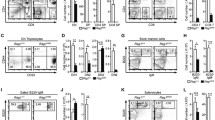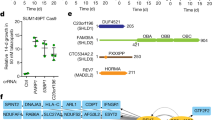Abstract.
The RAG1 and RAG2 proteins play a crucial role in V(D)J recombination by cooperating to make specific double-stranded DNA breaks at a pair of recombination signal sequences (RSSs). However, the exact function they perform has heretofore remained elusive. Using a combination of sensitive methods of sequence analysis, we show here that the active core region of the RAG2 protein, confined to the first three quarters of its sequence, is in fact composed of a six-fold repeat of a 50-residue motif which is related to the kelch/mipp motif. This motif, which forms a four-stranded twisted antiparallel β sheet, is arranged in a circular formation like blades of a propeller or turbine. Given the known properties of the β-propeller fold in mediating protein-protein interactions, it is proposed that this six-laded propeller structure of the RAG2 active core would play a crucial role in the tight complex formed by the RAG1 and RAG2 proteins and RSSs. Moreover, the presence of a plant homeodomain finger-like motif in the last quarter of the RAG2 sequence suggests a potential interaction of this domain with chromatin components.
Similar content being viewed by others
Author information
Authors and Affiliations
Additional information
Received 6 June 1998; accepted 9 June 1998
Rights and permissions
About this article
Cite this article
Callebaut, I., Mornon, JP. The V(D)J recombination activating protein RAG2 consists of a six-bladed propeller and a PHD fingerlike domain, as revealed by sequence analysis. CMLS, Cell. Mol. Life Sci. 54, 880–891 (1998). https://doi.org/10.1007/s000180050216
Issue Date:
DOI: https://doi.org/10.1007/s000180050216




